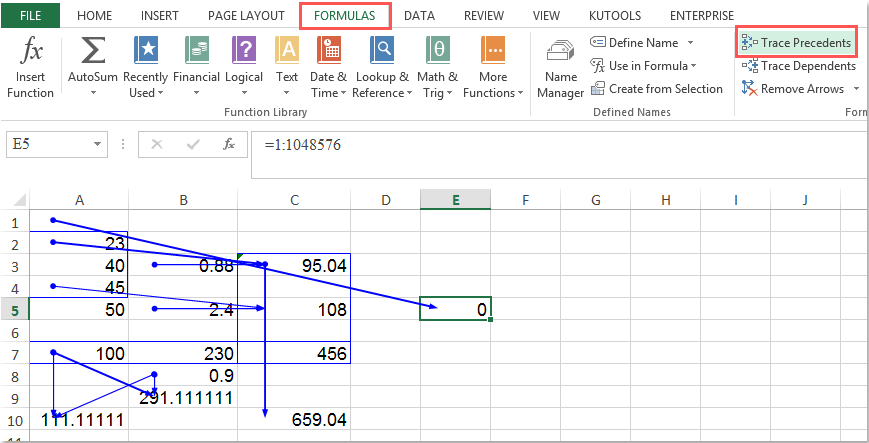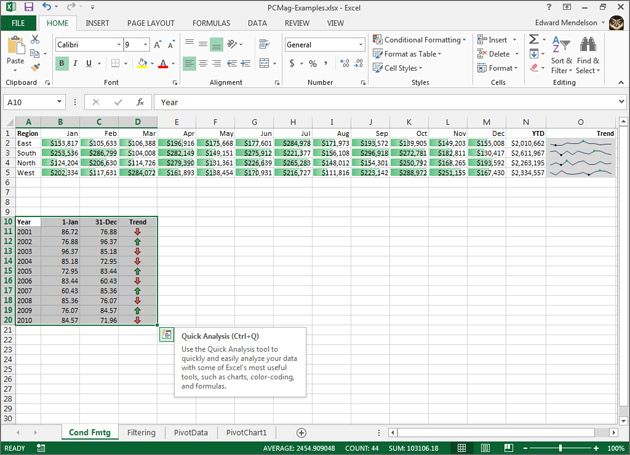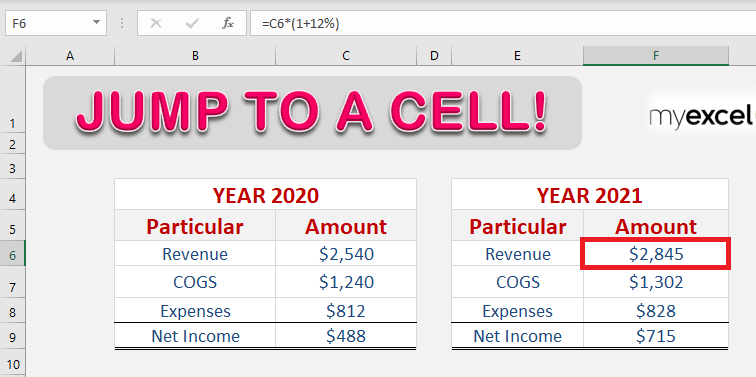- Excel 2010: In certain versions of Excel, the Navigatearrow method will have trouble navigating through all dependent cells if there are cells outside of the current workbook or worksheet. The only solution is to make VBA code turn on another worksheet before proceeding to cycle through the dependent cells.
- Trace only dependents or precedents with one click in real time. If you just want to trace only the dependents or only the precedents in a range, Kutools for Excel also can help you. Click Kutools More Monitor Precedents of Ranges / Monitor Dependents of Ranges to enable the trace precedents or trace dependents in current workbook.
- Mac Address Lookup
- Excel 2013 For Mac Trace Precedents On Another Sheet Of Paper
- Excel 2013 For Mac Trace Precedents On Another Sheet Pdf
It is easy in Excel to create a button on a worksheet that you can click to go to another sheet in the workbook. It is also a fun way to get started with macros in Excel if you have never made one before.
Mac Address Lookup
Blue arrows show cells with no errors. Red arrows show cells that cause errors. If the selected cell is referenced by a cell on another worksheet or workbook, a black arrow points from the selected cell to a worksheet icon. The other workbook must be open before Excel can trace these dependencies. Blue arrows show cells with no errors. Red arrows show cells that cause errors. If the selected cell is referenced by a cell on another worksheet or workbook, a black arrow points from the selected cell to a worksheet icon. The other workbook must be open before Excel can trace these dependencies. Dear community, I just used the trace dependents feature. If the cell is used on a different sheet, there is simply an icon indicating that it is referencing to a different sheet.
To do this, first decide which sheet will contain the button and which sheet you will select when you click, the button. We’ll add a button to sheet1 to take us to sheet3. So, click in Sheet 1 and, from the Developer tab on the Ribbon, choose Record Macro. If the Developer tab is not visible click here to find out how to display it.
Type the Name GoToSheet3 (a macro name must be all one word) and from the Store Macro in List choose to store the macro in This Workbook and click Ok.

Click the tab for Sheet 3 and then click Stop Recording on the Developer tab. The macro will be recorded and stored automatically for you.


To add a button to Sheet 1 that will run the macro, first return to Sheet 1 and from the Developer tab on the Ribbon select the Insert option and click the Button (Form Control) option at the top of the drop down list. You must choose the Form Controls and not the Active X Controls.
Drag a button onto the worksheet and when the Assign Macro dialog appears, click the GoToSheet3 macro and click Ok.
Select the text on the button and type Click to go to Sheet 3.

Click outside the button to unselect it and then click on the button to see it at work. When you click it you will be taken automatically to sheet 3.
If you need to make changes to the text on the button right-click on it to get access to the text. You can’t click it to select it because clicking it runs the macro attached to it.
Related posts:
In Excel, the other cells that are referred to in a formula are called precedents. Conversely, the cell containing the formula is a dependent because it needs the cell containing the data to complete its function. I’ve written before about the ability to trace precedents and dependents, But I recently learned two keyboard shortcuts that take you to your current cell’s precedents or dependents.
Ctrl+[ will move your cursor to the precedent(s) of the current cell, that is, the cell or cells that a formula in the current cell refers to.
Ctrl+] will move your cursor to the dependent(s) of the current cell, that is, the cell or cells with a formula that uses the current cell.
Some of you are asking why anyone would want to do that. Here are three good reasons.
- Checking Formulas. If you want to quickly check to make sure your formula is pointing to the right cell, Ctrl+[ will take you to the cells referenced in your formula. Then Ctrl+] to get back where you started.
- If you’re thinking of deleting or changing a cell but don’t know what it will affect, Ctrl+] will tell you if it is used in any formulas.
- Formulas now become shortcuts to help you navigate large spreadsheets, allowing you to jump between and detail sections and totals.
Excel 2013 For Mac Trace Precedents On Another Sheet Of Paper
